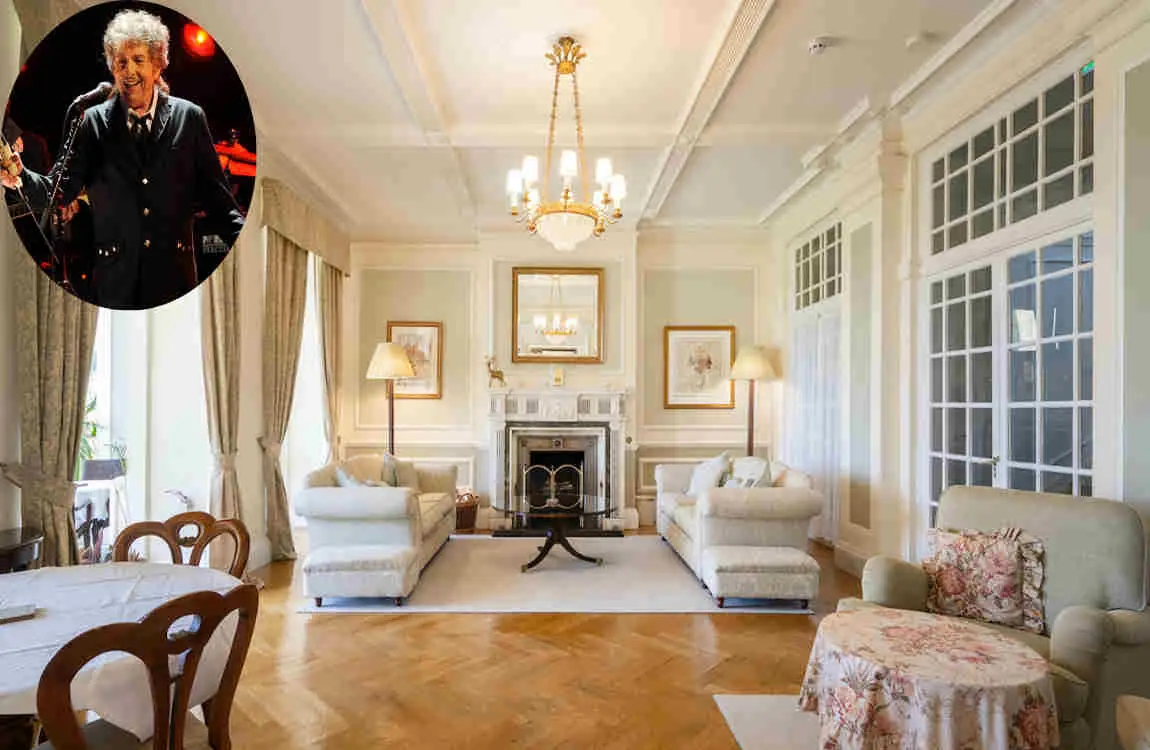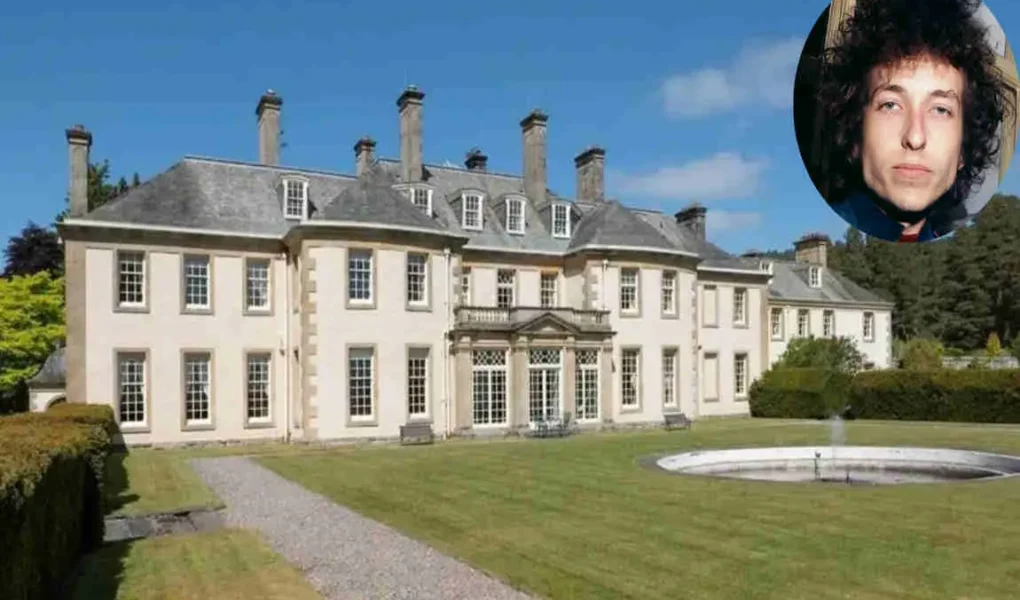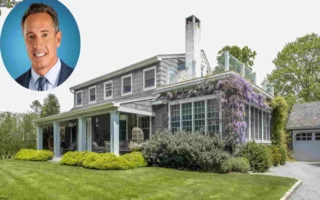Bob Dylan is more than just a musician—he’s a living legend whose poetry, songs, and enigmatic persona have shaped generations. Fans and music lovers are often drawn to the places where their heroes lived, wrote, and found inspiration. There’s something magical about stepping inside the rooms where history was made.
The Early Years – Dylan’s Childhood Home in Hibbing, Minnesota

The Zimmerman Family Move
In 1948, the Zimmerman family moved to Hibbing, Minnesota—a mining town on the state’s Iron Range. Young Robert Zimmerman, who would one day become Bob Dylan, was just seven years old. Hibbing’s hardworking, blue-collar atmosphere deeply influenced Dylan’s worldview and the gritty storytelling found in his music.
The town, known for its iron ore mines and tight-knit community, was a place of both challenge and inspiration. The Zimmerman family sought stability, and Hibbing provided just that, shaping the formative years of a future icon.
Address and Historic Details
Bob Dylan’s childhood home is located at 2425 7th Ave East in Hibbing. Today, the street is also known as Bob Dylan Drive—a fitting tribute to its famous former resident.
The house, built in 1939, stands out with its Mediterranean Modern style. It features a classic wood-framed stucco exterior and a cozy, understated charm. The home’s architecture mirrors the modest aspirations of many families in mid-20th-century America.
What Remains Today
Step inside, and you’ll find a space that feels like a time capsule. The house preserves much of its original 1950s décor, including vintage furnishings and a classic record player. The basement, lovingly curated by the current owner and archivist, Bill Pagel, feels almost like a personal museum.
Visitors can explore memorabilia that echoes Dylan’s early days—everything from hand-drawn doodles to family snapshots. The ambiance is warm, nostalgic, and deeply personal, offering a rare glimpse into the environment that nurtured Dylan’s budding creativity.
Significance to Dylan’s Creative Journey
This unassuming home is where Bob Zimmerman, later known as Bob Dylan, underwent a transformation. Locals often recall Dylan as “that weird kid from Hibbing,” whose creative spirit stood out in a conservative town. The isolation, the small-town rhythms, and the yearning for something more all fed into Dylan’s songwriting and worldview.
His roots in Hibbing provided a foundation of authenticity and storytelling that would resonate throughout his career. For many fans, this house is sacred ground—a place where the seeds of genius were first sown.
A Tour Inside Bob Dylan’s Hibbing House
Guided Tour Experience
You may also read (alex jones house).
If you’re thinking about visiting Bob Dylan’s house in Hibbing, you’re in for a treat. Tours are available by appointment; please contact Bill Pagel, the dedicated owner, in advance.
Once inside, you’ll explore the main living areas: the cozy living room where family gatherings took place, the simple yet inviting kitchen, and Dylan’s boyhood bedroom. Every corner tells a story, and the atmosphere is surprisingly intimate.
Artifacts and Memorabilia
What makes this house truly special is its authentic memorabilia. You’ll see:
- Original family belongings: Furniture, kitchenware, and home décor from Dylan’s childhood.
- Dylan’s 45 RPM records: A collection of classic singles from the era.
- Vintage audio equipment: The record player that sparked a lifelong love of music.
- Lyric manuscripts and doodles: Early evidence of Dylan’s creative spark, including handwritten lyrics and carved initials in the woodwork.
These artifacts provide a tangible connection to Dylan’s youth and the early stirrings of his artistic talent.
The Emotional Impact
Guests often describe their visit as deeply moving. There’s a sense of nostalgia and wonder in standing “where it all began.” Many reviewers echo the sentiment that the house feels alive with history and inspiration.
As one guest put it, “You can almost hear the echoes of a young Dylan strumming his guitar upstairs.” For fans and music lovers, it’s a pilgrimage—a chance to touch the origins of greatness.
New York City Hideaway – The Turtle Bay Townhouse
Bob Dylan Moves to NYC
After conquering the folk scene and redefining rock music, Bob Dylan’s journey took him to New York City. By the 1980s, he sought a place where he could find privacy and focus on his family life, away from the glare of the spotlight.
This search led him to the exclusive Turtle Bay Gardens enclave—a hidden gem in the heart of Manhattan.
Inside Turtle Bay Gardens
Dylan’s Manhattan refuge was a five-story townhouse on East 49th Street, part of the historic Turtle Bay Gardens. Built in the 1860s, the townhouse exudes old-world charm with its stately façade and architectural details.
One of the home’s unique features is access to a secret shared garden—an oasis of greenery tucked behind the stately brick row houses. The area is known for its celebrity neighbors, privacy, and sense of community.
The Home’s Legacy
Dylan first rented the home in the 1980s and then purchased it in 1990. He owned the property until 2005, using it as a quiet retreat from his public persona. The townhouse provided a peaceful backdrop for songwriting and family gatherings.
Over the years, its value soared, and it remains a highly sought-after address. Today, when the townhouse is occasionally listed for sale, fans can glimpse the elegant interiors and imagine Dylan crafting his later works within its walls.
European Retreat – Aultmore House in the Scottish Highlands
Acquisition of Aultmore House
You may also read (inside glenn jacobs house a celebrity home tour).
In 2006, Bob Dylan and his brother David Zimmerman purchased Aultmore House, an Edwardian mansion in the Scottish Highlands. The estate sits near Nethy Bridge, nestled within the breathtaking Cairngorm National Park.
This grand home represents Dylan’s love of privacy and his penchant for retreating from the world’s chaos.
Architecture and Features
Aultmore House was built between 1911 and 1915, boasting a rich historical pedigree. With 16 bedrooms, 11 bathrooms, and grand reception rooms, the mansion is the epitome of Edwardian elegance. There’s even a billiard room and a 25-acre private estate—plenty of space for reflection and inspiration.
The home’s stately architecture, intricate woodwork, and sweeping views make it a true sanctuary.
Privacy and Inspiration
For Dylan, Aultmore House offers more than just luxury—it provides peace, seclusion, and a direct connection to the natural world. The Scottish Highlands, with their dramatic landscapes and moody weather, offer a perfect setting for contemplation and creativity.
While the mansion has been modernized for comfort and security, it retains its original period details and timeless charm.
Recent Developments
In recent years, Aultmore House has been listed for sale, attracting interest from fans and property enthusiasts alike. The listing offers rare glimpses into Dylan’s taste and lifestyle, showcasing how the estate served as an occasional family retreat, especially before the global pandemic.
Design, Personality, and Legacy Across Dylan’s Homes

Architectural Styles – A Comparative Table
Let’s compare Dylan’s three major homes to see how each reflects a different chapter of his life:
HomeStyle/Period Notable Features Years Owned
Hibbing Childhood Home Mediterranean Modern Modest size, 1950s decor, historical memorabilia 1948–1959
Turtle Bay Townhouse 1860s Townhouse Secret garden, celebrity enclave, five stories 1980s–2005
Aultmore House (Scotland) Edwardian Mansion 16 bedrooms, 25-acre estate, Scottish countryside 2006–present
Common Themes in Dylan’s Spaces
Across all these homes, a few themes stand out:
- Privacy: Dylan consistently sought spaces that offered solitude and protection from the public eye.
- Nostalgia: From the vintage feel of the Hibbing house to the classic architecture of his townhouses, Dylan’s homes reflect a longing for the past.
- Connection to Roots: Whether modest or grand, each home ties back to Dylan’s sense of identity and belonging.
How Dylan’s Homes Mirror His Artistic Evolution
Each home is like a mirror, reflecting a different phase of Dylan’s journey:
- Minnesota: Early ambition, restless creativity, and the struggle to break free from small-town expectations.
- New York: A haven for family, songwriting, and respite from fame during intense career phases.
- Scotland: A place for retreat, reflection, and personal renewal as Dylan embraced the quieter rhythms of later life.
The influence of place is clear in Dylan’s music—each address marking a new chapter in his creative evolution.
Visiting Bob Dylan’s Houses – A Fan’s Guide
Touring Hibbing
If you dream of walking in Dylan’s footsteps, Hibbing is the place to start. To visit Bob Dylan’s house, contact Bill Pagel to book a guided tour. The experience is personal, and you’ll have the opportunity to explore the rooms where Dylan grew up.
While in Hibbing, don’t miss these nearby attractions:
- Hibbing High School: Where Dylan performed in talent shows.
- The Iron Range: Explore the local mining history that influenced Dylan’s worldview.
- Dylan-themed murals and cafes: Celebrate the town’s most famous son.
NYC and Scotland: Private Homes, Public Fascination
While Dylan’s Turtle Bay townhouse and Aultmore House are private residences, there are still ways for fans to connect:
- Turtle Bay Townhouse: It occasionally appears on the market, and you can view its elegant exterior from the street.
- Aultmore House: Featured in property listings, offering a virtual tour for enthusiasts, though not open to the public.
Cultural Impact – Why Bob Dylan’s Homes Matter
Inspiration to Fans and Creators
For many, visiting or simply learning about Bob Dylan’s house is more than a curiosity—it’s a source of inspiration. Fans and aspiring artists draw strength from seeing where Dylan’s journey began, realizing that greatness can grow from humble origins.
Music historians and songwriters see these homes as living testaments to creativity and perseverance.
Preservation of Musical Heritage
Thanks to people like Bill Pagel, Dylan’s childhood home remains lovingly preserved. The community’s commitment to maintaining these sites ensures that future generations can connect with Dylan’s legacy.
By documenting and sharing these spaces, we keep the stories alive—and honor the cultural heritage they represent.
You may also read (inside the oakley founder house a malibu legacy unveiled).




